 Atlantic Yellow-legged Gull (atlantis)
Atlantic Yellow-legged Gull (atlantis)
(last update: October 12, 2011)
Atlantic YLG 1cy December
Atlantic Islands Yellow-legged Gulls: an identification gallery
Philippe Dubois (France)
IN: BIRDING WORLD, Vol 14 No 7
BELOW: PART III
Adults and near-adults
Adults and near-adults have dark grey upperparts. In full breeding plumage, they show a white mirror on p10, but, typically, no mirror on p9 (or very rarely: 2% among Azorean birds, c.10% in Madeiran birds, K.M. Olsen), unlike nominate michahellis (Mayaud 1940). They also often have a narrow white line between the black sub-terminal band of p5 and the grey of the feather. On the specimens checked at the MNHN (Paris), many birds have black along the primary shafts.
One of the most striking features of adults, in all the Atlantic islands, is the iris colour, which is very pale yellow or even whitish, recalling Herring Gull; Mediterranean michahellis rarely has such a pale eye; typically it is darker yellow (and sometimes amber). The orbital ring is red and the bill is yellow with a rather large orange-red spot on the gonys. In late summer, they are in heavy primary moult (mainly missing or growing p7-8, with p9-10 old) and covert moult, with some birds showing a whitish bar across the wing in flight due to the greater coverts being missing. I distinguished two ’adult’ types in the Azores in late summer: the first with a completely, or almost completely, white head and bright yellow or orange-yellow legs (presumed adults in summer plumage), and the second with an obviously streaked head and pale yellow legs (presumably either moulting adults or possibly fourth-winter birds).
During my stay in the Azores, in August 2000, I made two interesting observations. Firstly, I saw at least two adults with definitely pale pink legs (at Lajes, Pico). At first, I thought that they might be argenteus/argentatus, or even smithsonianus, but the mantle was too dark a grey and the moulting primary pattern did not fit with these taxa, so perhaps occasional atlantis can have pink legs.
And secondly, I saw two separate adults (again at Lajes, Pico, and at Lagoa Rasa, Flores) the same size as typical atlantis, but with the upperparts a shade darker grey, the wings longer, the legs and bill bright yellow, with a bright red spot on the gonys, the iris bright yellow (for two birds) and the head completely white. These birds, which appeared not to be Lesser Black-backed Gulls, stood out from the other adult atlantis.
Discussion
From this first look at the identification of Atlantic Islands Yellow-legged Gulls, it appears that true atlantis, from the Azores, differ from the Canary Islands and Madeiran birds in a number of respects: they are darker and show some plumages - especially from juvenile to second-summer - which are quite distinct.
Work is in progress to assess the relationships between the Mediterranean and Atlantic continental coast birds (].M. Pons et al., in prep.) and the birds from Atlantic islands. From a genetic point of view, no differences have yet been found in the mtDNA between nominate michahellis and atlantis, even in the Azorean birds (A. Helbig in litt.). However, using other genetic markers, Crochet (1998) and Pons et al. (in progress) have found some differences between ‘Atlantic’ Yellow-legged Gulls from the continent and michahellis from the Mediterranean basin. Thus, more genetic studies are needed to clarify the genetic affinities among the continental and insular forms. But the differences in plumage, and apparently in the moult sequences, seem to be important between nominate michahellis and atlantis, especially with Azorean birds. Finally, birds on the Azores lay their eggs mainly in late April (Le Grand 1984 & 1993), a little later than michahellis from the Atlantic continental coast.
It is possible that the phenotypic and biological differences between nominate michahellis and at least the Azorean birds are the result of rapid reproductive isolation and that classic lineage markers, such as the cytochrome b gene, would not display significant genetic differentiation (see Crochet 1998).
From the identification point of view, the Atlantic Islands - and especially the Azorean - Yellow-legged Gulls are distinct from nominate michahellis in most plumages, so their taxonomic separation seems reliable. Further studies are necessary to better understand the links between ’Atlantic’ michahellis (from north-western Spain to Morocco) and the Yellow-legged Gulls on Madeira and the Canary Islands, although the last more closely resemble typical michahellis and birds from Morocco than atlantis. The potential identification pitfall
posed by adult Herring x Lesser Black-backed Gull hybrids has not been addressed here.
Acknowledgements
Thanks are due to Frédéric Jiguet for very useful discussions on this subject, for comments on the first draft of this paper and for the photographs he provided. Jean-Marc Pons also kindly commented on the draft and allowed access to the collections of the Muséum National d’Histoire Naturelle in Paris. Thanks are also due to Serge Nicolle and Klaus Malling Olsen for sharing their field experience of Atlantic Islands Yellow-legged Gulls, to Pierre-André Crochet for on-going discussions on gulls, to Mashuq Ahmad, Martin Garner, Killian Mullarney and Brian Small, who all kindly commented on the draft of this article, and to Keith Regan who provided photographs.
References
Beaubrun, P.C. 1988. Le Goéland leucophée (Larus cachinnans michahellis) au Maroc. Reproduction, alimentation, repartition et déplacements en relation avec les activités depéche. Ph.D. Thesis, Univeristé de Montpellier, France.
Cramp, S. & Simmons, K.E.L. 1982. The Birds of the Western Palearctic. Vol 3. Oxford.
Crochet, P.A. 1998. Structure génétique des populations chez le Goéland leucophée, phylogéographie et phylogénie chez les Laridés. Ph.D. Thesis, Université de Montpellier.
Dubois, P.J. 1986. Notes on the 'Cantabrican’ Herring Gull. Proceedings of the 4th International Identification Meeting: 41-42.
Dwight, J. 1922. Description of a new race of the Lesser Black-backed Gull, from the Azores. Am. Mus. Novitt. 44: 1-3.
Garner, M. 1997a. Identification of Yellow-legged Gulls in Britain. Part 1. Brit. Birds 90: 25-62.
Garner, M. 1997b. Identification of Yellow-legged Gulls in Britain. Part 2. Brit. Birds 90: 369-383.
Grant, P. 1986. Gulls, a guide to identification. 2nd. edn. Calton.
Higgins, P.J. & Davies, S.J.J.F. 1996. Handbook of Australian, New Zealand and Antarctic Birds. Vol. 3. Oxford.
Howell, S.N.G., King, J.R. & Corben, C. 1999. First prebasic molt in Herring, Thayer’s, and Glaucous-winged Gulls. J. Field Ornithol. 70: 543-554.
Howell, S.N.G. 2001. A new look at moult in gulls. Alula 1/2001: 2-11.
Jiguet F., Jaramillo A. & Sinclair I. 2001. Identification of Kelp Gull. Birding World 14: 112-125.
Le Grand, G.W. 1984. Ornithologie et conservation aux Acores. Ph.D., Universidade dos Acores. Ponta Delgada.
Le Grand, G.W. 1993. Recherches sur l’écologie des Vertébrés terrestres de l’archipel des Acores. Ph. D., Ecole Pratique des Hautes Etudes, Montpellier. p343.
Mayaud, N. 1940. Considérations sur les affinités et la systématique de Larus fuscus et Larus argentatus. Alauda 12: 80-98.
Moore, C.C. 1996. Ship-attending movements of Atlantic Yellow-legged Gull in Portuguese waters. Dutch Birding 18: 18-22.
Regan, K. 1999. Atlantic Yellow-legged Gull from Madeira.
http://www.wheatear.pwp.blueyonder.co.uk/atlantic%20yellow%20legged%20gull.htm
Wilds, C. & Czaplak, D. 1994. Yellow-legged Gulls Larus cachinnans in North America. Wilson Bull. 106: 344-356.
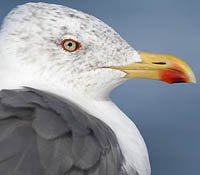
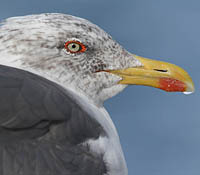
.jpg)


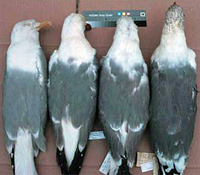
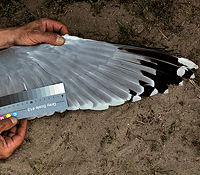
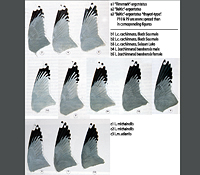
.jpg)